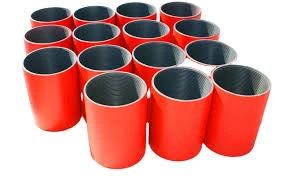- Afrikaans
- Albanian
- Amharic
- Arabic
- Armenian
- Azerbaijani
- Basque
- Belarusian
- Bengali
- Bosnian
- Bulgarian
- Catalan
- Cebuano
- Corsican
- Croatian
- Czech
- Danish
- Dutch
- English
- Esperanto
- Estonian
- Finnish
- French
- Frisian
- Galician
- Georgian
- German
- Greek
- Gujarati
- Haitian Creole
- hausa
- hawaiian
- Hebrew
- Hindi
- Miao
- Hungarian
- Icelandic
- igbo
- Indonesian
- irish
- Italian
- Japanese
- Javanese
- Kannada
- kazakh
- Khmer
- Rwandese
- Korean
- Kurdish
- Kyrgyz
- Lao
- Latin
- Latvian
- Lithuanian
- Luxembourgish
- Macedonian
- Malgashi
- Malay
- Malayalam
- Maltese
- Maori
- Marathi
- Mongolian
- Myanmar
- Nepali
- Norwegian
- Norwegian
- Occitan
- Pashto
- Persian
- Polish
- Portuguese
- Punjabi
- Romanian
- Russian
- Samoan
- Scottish Gaelic
- Serbian
- Sesotho
- Shona
- Sindhi
- Sinhala
- Slovak
- Slovenian
- Somali
- Spanish
- Sundanese
- Swahili
- Swedish
- Tagalog
- Tajik
- Tamil
- Tatar
- Telugu
- Thai
- Turkish
- Turkmen
- Ukrainian
- Urdu
- Uighur
- Uzbek
- Vietnamese
- Welsh
- Bantu
- Yiddish
- Yoruba
- Zulu
An Overview of Tubing and Casing in Oil and Gas Production Systems
Understanding Tubing and Casing in the Oil and Gas Industry
In the realms of oil and gas extraction, two critical components, tubing and casing, play pivotal roles in ensuring the safety, efficiency, and productivity of wells. These structures form essential parts of the well infrastructure that not only supports the extraction process but also protects the surrounding environment. Understanding the difference between tubing and casing, along with their respective functions, is vital in comprehending the complexities involved in drilling operations.
What is Casing?
Casing refers to a series of pipes that are installed in the wellbore after drilling. The primary purpose of casing is to provide structural integrity to the well, preventing collapses and ensuring stability. Casing is composed of strong steel tubes that can withstand the high pressures and harsh conditions of the subterranean environment. It serves multiple critical functions
1. Well Stability Casing reinforces the wellbore, reducing the risk of collapse during drilling and production.
2. Isolation It isolates different geological formations from one another, preventing the migration of fluids between layers. This is crucial for maintaining pressure control and preventing contamination of water aquifers.
3. Fluid Control Casing helps control the flow of fluids into and out of the well, allowing for efficient management of the extraction process.
4. Protection It protects the well from external environmental factors, such as corrosion and erosion.
Casing is typically installed in sections, with each section requiring precise measurements and specifications based on the geological conditions encountered during drilling. A wellbore can be lined with several types of casing, such as surface casing, intermediate casing, and production casing, each designed to serve specific roles at different stages of the well lifecycle.
What is Tubing?
tubing and casing

In contrast, tubing is a smaller diameter pipe that is inserted into the well after casing has been established. Tubing’s primary purpose is to facilitate the transport of oil, gas, or other fluids from the reservoir to the surface. Unlike casing, which remains fixed in place once installed, tubing is designed to be removable and transportable. Its characteristics include
1. Fluid Transport Tubing is the conduit through which the produced hydrocarbons flow to the surface. This transportation can occur under natural pressure or be aided by artificial lift systems.
2. Downhole Equipment Tubing can accommodate various downhole equipment, including pumps and valves, which are essential for enhancing production efficiency.
3. Safety Tubing prevents unsafe blowouts by controlling the pressure in the well, thus enabling safe extraction practices.
4. Cost Efficiency Since tubing helps facilitate continuous flow of hydrocarbons, it ultimately contributes to cost-efficient operations by minimizing downtime and enhancing production rates.
Tubing systems are specifically designed to withstand various pressures and stresses encountered during oil and gas production. Engineers must carefully consider the material and design of tubing to ensure reliability and performance throughout the well's lifespan.
Conclusion
Both tubing and casing are fundamental to the safe and effective operation of oil and gas wells. Casing provides the necessary structural integrity to the wellbore, safeguarding against collapse and fluid migration, while tubing serves as the vital channel for transporting produced resources to the surface. Understanding the distinct roles of these components enables industry professionals to better manage drilling activities and optimize production efficiency.
In an era where the environmental impacts of oil and gas extraction are under scrutiny, advancements in tubing and casing technology aim to enhance safety and sustainability. Innovations such as corrosion-resistant materials and smart monitoring systems are paving the way for more efficient and environmentally friendly drilling practices. As the industry evolves, the engineered integrity of tubing and casing continues to be paramount in safeguarding both the resources we rely on and the ecosystems from which they are extracted. In conclusion, grasping the intricacies of tubing and casing is not just beneficial for engineers and geologists; it is essential for anyone engaged in or interested in the oil and gas sector.
-
Tubing Pup Joints: Essential Components for Oil and Gas OperationsNewsJul.10,2025
-
Pup Joints: Essential Components for Reliable Drilling OperationsNewsJul.10,2025
-
Pipe Couplings: Connecting Your World EfficientlyNewsJul.10,2025
-
Mastering Oilfield Operations with Quality Tubing and CasingNewsJul.10,2025
-
High-Quality Casing Couplings for Every NeedNewsJul.10,2025
-
Boost Your Drilling Efficiency with Premium Crossover Tools & Seating NipplesNewsJul.10,2025







